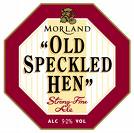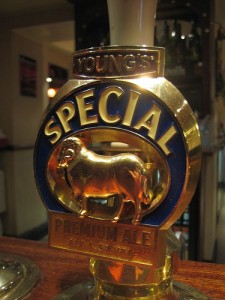Recipe: Samuel Smiths Nut Brown Ale
So we reach our last brew in the Old and Browns series. So far we have a Theakston Old Peculier (10/10), an Old Speckled Hen, a Left Over Old Ale (my own take on the Old Ale style using left over ingredients) and finally we get to the Samuel Smiths Nut Brown Ale I have been promising.
I must admit to having a significant bias to Sam Smith’s, at the age of 18 I got a job there. The manager (a rather scary Mancuian) took a liking to me and began to teach me the art of cellaring and before you know it I was handling the oak barrels in the cellar, learning how to tap and spile, prep the beer lines, and take care of these hand crafted brews. It was the time I transitioned from drinking beer at parties to really beginning to appreciate real-ale as an art.
Samuel Smith’s brewery is a classic Yorkshire brewery located in Tadcaster, North Yorkshire. Founded in 1758, it is also Yorkshires oldest. The family owned brewery was not originally founded by the Smith’s. In 1847, Samuel Smith (a cattle dealer for Leeds) asked his son John to purchase a struggling Tadcaster brewery owned by the Hartley family. John was joined by his brother William and John left his share of the firm in the custodianship of his other brother, Samuel. William bought out Samuel’s half and moved the brewery next door where another classic Yorkshire ale, John Smiths Bitter, is still brewed to this day. The Smith family has quite the ale legacy.
In 1886 Samuel’s son Samuel Smith inherited the Old Brewery on Williams death and re-opened the brewery under his own name where it still runs as an independent brewery to this day. The firm is fiercely independent. They own over 200 pubs and refuse to carry any expensive branded drinks, they don’t play music to avoid paying the license fees and pass off the cost savings back to the customers by keeping the ales priced really cheap only increasing in price as the cost of raw materials and tax increases.
The brewery has other notable characteristics. It still uses a yeast strain that dates back t0 1900, it draws water from the same well the brewery was founded over in 1758, and still employs the Yorkshire Squares style of brewing. And for all you Vegans out there all Sam Smiths brews are vegan (with the exception of Old Brewery Bitter).
Now onto the beer. Nut Brown Ale would have been traditionally called a “mild”. Not a reflection on its strength but because it was not sour as some of the aged strong ales became. These sour ales were then blended with the newer mild’s in the local pubs to the taste of the custodian. It would be defined today as a “Northern English Brown Ale”, a topic we covered in the overview post on Brown Ales. A Northern Brown is defined as:
Drier and more hop-oriented than the southern English brown ale, with a nutty character rather than caramel.
Research for this ale was tough. The Old Brewery folks are as tight with information as they are with their money. I must admit to being a little concerned with replicating this ale. On the US importers website page on Nut Brown Ale it is claimed the nutty flavour is derived from the Yorkshire Squares technique. Something I will not be able to replicate.
The taste we are trying to replicate is described as follows (from the brewer):
Walnut-like color and palate of hazelnuts. Wonderful balance of roasted crystal malt and aromatic hops. Long clean finish.
I got some more stats from BeerAdvocate: 5.00 ABV, creamy mouthfeel with light carbonation. So the rest we must derive from a process of deduction. We know all Sam Smith’s brews (with the exception of Oatmeal stout and the fruit beers) consist only of malt, water and hops with no adjuncts used. We also know the brewery uses the same strain of yeast in all its beers.
From comparing the recipe given for Old Brewery Pale Ale (OBPA) in an old version of Graham Wheelers “Brew Your Own British Real Ale” (the new version has no Sam Smiths recipes), the OBPA review in the Almanac, and both the Sam Smiths recipes in “Clone Brews” book, it is clear all make use of Fuggles as the flavour hop and East Kent Goldings for the bittering hop.
I also found a reference online to another Graham Wheeler book where he apparently has a recipe for Samuel Smiths Nut Brown Ale. I could not find a list of ingredients but I found the stats listed as 5% ABV, OG 1048, 35 IBU, 36 EBC (~19 SRM). The IBU’s seem a little high to me but I think we can figure the hop load out by referencing some classic Brown Ale recipes. Given the ale is a brown the hop load should be kept low to bring out the malt.
So in compiling this recipe I will follow the other Sam Smith recipes and go with East Kent for bittering and Fuggles for flavour. For yeast I am going to go with Whitbread dry, a popular strain for brewing Northern Brown styles. It has a high attentuation so will finish dry, a requirement for Northern Browns. For malt I will stick with crystal and chocolate malt, a staple in brown ales. I shall use parameters set in the BJCP Northern English Brown style guide to help construct the recipe. So here goes.
(recipe can be found online @ hopville.com)
Samuel Smiths Nut Brown Ale (BJCP Beer Style: English Brown Ales, category: Northern English Brown)
- 2.5 Gallon, 60 min boil
- OG 1048, FG 1012
- 4.8-5.0% ABV
- 28 IBU (used the Rager formula)
- 17° SRM (Light to Medium Brown)
- Ready to drink in 2+ Months
Base Malt and Fermentables:
- 2 lb 8 oz Light Dry Malt Extract (60 mins)
Specialty Grains:
- 3 oz British Crystal 60L
- 2 oz Chocolate Malt
Hops
- Bittering Hops – 0.5 oz East Kent Golding (60 mins)
- Flavour Hop – 0.25 Fuggles (15 mins)
Yeast
- Wyeast British Ale (1098)
Other Additions
- 1 tsp Irish Moss (15 mins)
- 1/4 tsp Yeast Nutrient (10 mins)
Process
- Please follow the process guidelines outlined in my post here. You will require all the equipment specified here.
- Primary Fermentation: 7 days at 65-75°
- Secondary Fermentation: 1-2 weeks in the same location as the primary
- Prime and store in the bottle for at least 4 weeks before consuming
- Peak flavour will be reached after 4 weeks in the bottle








